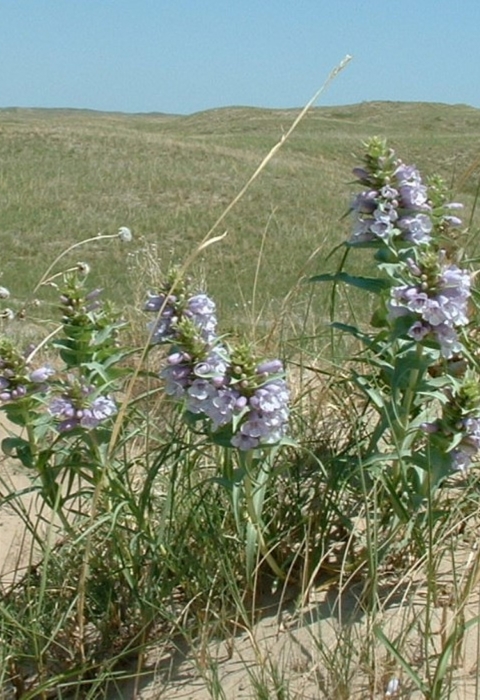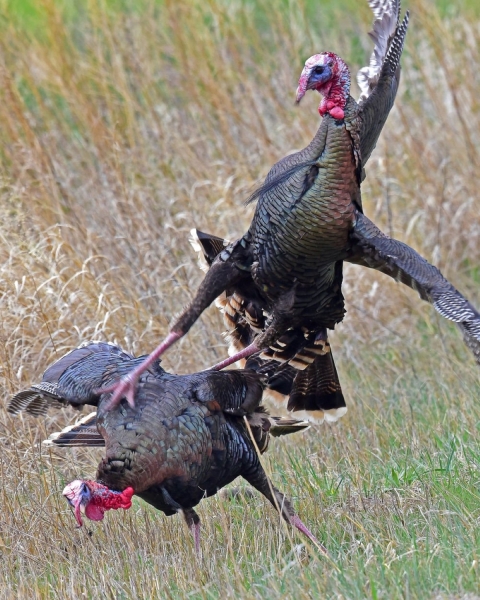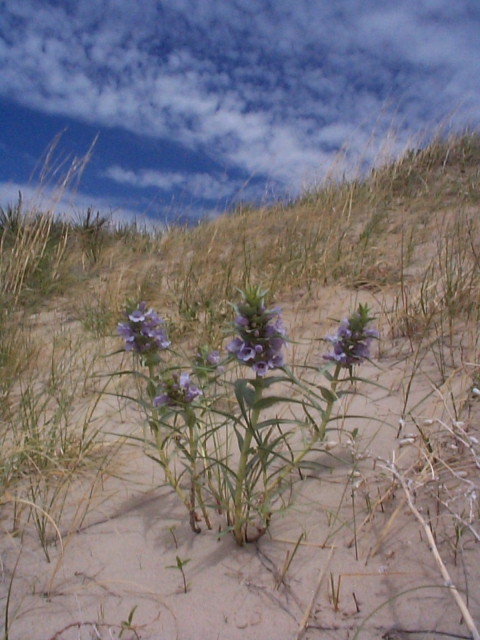Seasons of Wildlife
The rolling green hills provide a glimpse of native prairie. Current management and future plans are to emphasize the untouched character of the landscape. Expect to see vast panoramas of mostly untouched grasslands, much as our ancestors observed.
There are interesting things to see on Crescent Lake NWR each season. During the spring and fall, a wide variety of migrating shorebirds and passerines utilize the Refuge as a stop on their journey. In the summer months breeding ducks and geese populate the lakes. Red-tailed hawks and northern harriers search the meadows for prey. You can also find white-tailed deer, mule deer, pronghorn, and a variety of birds that live here year round including ring-necked pheasants, greater prairie chicken, and sharp-tailed grouse.
Spring
- Willows are the first trees to “green up”
- Canada geese and sandhill cranes migrate through
- American white pelicans and other marsh and water birds arrive
- Large numbers of Wilson's phalarope arrive
- Warblers return
- Grouse dance in mid-April
- Giant Canada geese nest
- Goslings appear in late April
- Snakes and turtles become active
- Fish like bass and bluegill spawn
- Chorus frogs call (sounds like a finger running across the teeth of a comb)
Summer
- Plants like spiderwort, yucca, prickly pear, and the endangered blowout penstemon bloom in June
- Female cottonwood trees drop cotton (seeds)
- Upland sandpipers seen on fence posts
- Shorebirds can be seen on mudflats
- Double-crested Cormorants nest on area lakes
- Eared grebes seen on floating nests in Smith and Deer Lakes
- Grouse, pheasant, and waterfowl broods are visible
- Pronghorn bear their young (kids)
- Deer fawns visible
- Garter snakes bear live young
- Toads call (sounds like bleating sheep)
- Migrating blue-winged teal begin arriving from the north in August
- Sunflowers bloom in late summer
Autumn
- Big bluestem (turkey foot) seeds out
- Painted turtles bask on logs and muskrat lodges
- Bass fishing improves with cooler days
- Horned larks and meadowlarks forage along roadsides
- Coyote pups disperse to set-up their own territories
- Antlered deer visible
- Deer in rut
- Peak waterfowl migration in November
Winter
- Most visible species are ring necked pheasants, northern harrier, rough legged hawks, large wintering deer herds
- Deer drop their antlers
- Reptiles are underground and dormant
- Ice fishing on Crane, Smith and Island Lakes
Featured Species
Crescent Lake NWR boasts 21 lakes and numerous ponds that are supported by the Ogallala Aquifer lying below the hills. The Refuge is home to many species of reptiles, amphibians, fish, mammals, waterfowl and vegetation.
Mammals
The grasslands range from densely vegetated meadows to sparsely covered sandhills and support a wide variety of wildlife. To date, 35 species of mammals are known to call Crescent Lake NWR their home. These include a variety of small mammal groups that include shrews, moles, ground squirrels, pocket gophers, mice, rats, and voles. Larger mammals include the porcupine, muskrat, raccoon, six members of the weasel family and badger. Coyotes are commonly encountered on the Refuge. Pronghorn antelope and both mule and white-tailed deer call the Refuge their home.
Endangered plants
Blowout penstemon was found on Crescent Lake NWR in 1987 and is the only endangered plant on the Refuge. The plant's steady decline from 2,058 plants to 329 by 2006 has prompted transplanting efforts. These efforts brought the population back to over 3,600 by 2018. Recovery by transplanting is still underway.
Waterfowl
Thirty-one species of waterfowl can be found on the Refuge, fifteen of which nest here. The most common nesting species include Canada Geese, Mallards, Blue-winged Teal, Northern Shovelers, Gadwall, Northern Pintails, Redheads, and Ruddy Ducks. Trumpeter swan have nested on several area lakes including the current nest at Gimlet Lake.
Migration begins in March, peaking in early April with approximately 20,000 birds utilizing the Refuge on a daily basis. Fall migration runs from late September through October with Refuge populations averaging approximately 15,000 birds a day. Blue-winged Teal and Mallards are the primary nesters at Crescent Lake NWR. Canada goose nesting sites are provided in nesting tubs.
Amphibians, Reptiles and Fish
The most common reptiles and amphibians are tiger salamander, northern prairie lizard, bullsnake, garter snake, and box turtle. The yellow mud turtle is considered a Refuge species of special interest. Island Lake supports warm water species including largemouth bass, bluegill, crappie, yellow perch, walleye, and sauger. Perch/panfish may be found in Smith Lake. Crane Lake was stocked with yellow perch in 2000. The fathead minnow, the only other fish species on the Refuge, was introduced into several lakes in the late 1970s. The minnow provides a food source for a variety of birds but also creates turbid water, an undesirable result.


